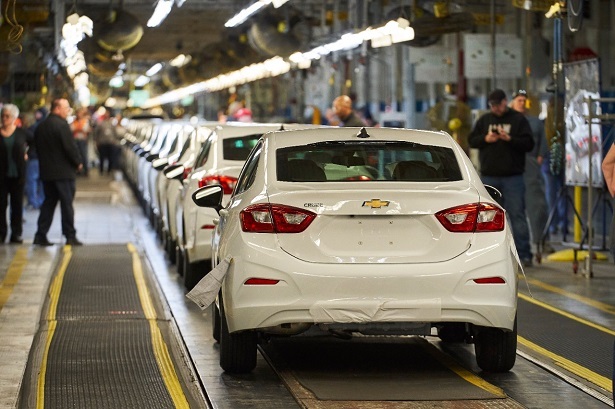It's been a rough start to the week for General Motors as nearly 50,000 employees belonging to the United Auto Workers union walked out to strike against the automaker. The UAW is fighting for GM to raise wages, improve health benefits and job security for its employees. They are also asking for GM to move manufacturing jobs from Mexico to the US. What does this mean for GM, the members of UAW and thousands of future American jobs at stake?
This is not the first time the UAW and GM have butted heads. According to the Bureau of Labor Statistics, the union has organized 21 major strikes since 1994. In 2007, a two-day strike with over 70,000 employees demanded an independent health care trust fund and job guarantees. In 1998, GM lost over $2 billion in profits after 9,000 employees walked out. That strike ended in an agreement to keep some of the GM factories open but also demanded a 15% increase in output for workers.

The current UAW strike, which began at midnight on Monday, is causing significant production delays for GM. It has forced 33 factories to shut down resulting in production losses of an estimated 23,000 vehicles so far. This number can rise to 43,000 by the end of the week if a deal isn't reached. It's estimated that the strike may cost GM anywhere from $50 million to $100 million per day in lost revenue, but the losses could be minimized by GM not paying the striking workers. If there is a resolution soon, GM will be able to ramp up production to catch up from the losses. On the other hand, if it drags out to over a week, there could be a supplies shortage which will impact customers and cause a noticeable loss in sales.
GM and their U.S. employees aren't the only ones to feel the heat of the strike. Although the walkout is temporarily shutting down factories in the U.S., some of GM's Canadian employees will feel the pain. GM has announced they will temporarily lay off 1,200 workers in their final assembly plant in Canada. Additionally, trucking companies are affected due to the reduction in vehicles to deliver. Unionized Trucksters are also not allowed to cross picket lines to pick up vehicles for delivery.
UAW members won't come out of the strike unscathed. GM dropped health benefits for the 49,000 striking workers until a resolution is reached and UAW will be providing coverage with their emergency fund. Once the strike concludes, members will need to re-enroll into their GM health insurance plan. As far as pay goes, strikers forgo their wages from GM but make $250 per week after the eighth day from UAW.

What is the UAW's end goal for this strike which is taking a toll on GM and about half of the automaker's workforce? In addition to raising wages for new hires and an upgrade to health benefits, the UAW wants to see a revival in U.S. jobs with a move for manufacturing from Mexico to the U.S.
After GM closed several U.S. based plants like the one in Lordstown, Ohio, and announced future closures, the UAW was underwhelmed with GM's initial proposal to make a $7 billion investment and create 5,400 jobs. Motor1 reports that the investment would cover eight locations across four states and includes battery production in Ohio and electric vehicle production at two Michigan facilities.
So far, GM has not budged on their stance refusing to move jobs from Mexico to the U.S. As the strike drags into day four, we know GM and the UAW are continuing talks but have not yet come to a resolution. With GM showing profit growth in the last couple of years, UAW employees want to receive a reward for the fruits of their labor. Whether this comes in the form of wage increases, better health care or U.S. job growth remains to be seen.


